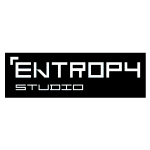
Keep up to date with our innovative initiatives.
Sign up here

The Media Internet Area explores new immersive and interactive experiences and develops the systems that enable the Internet distribution and consumption of such experiences. Its research activities bring forward the newest formats and experiences, focusing on how to capture, produce, distribute and render them. The main research areas are: Distributed and Interactive Systems, Human Computer Interaction and Immersive Media Formats:
Distributed and Interactive Systems (DIS)
Technological aspects and solutions to next-generation distributed systems over heterogeneous environments, while guaranteeing high-performance, scalability, ubiquity, adaptability and synchronization, among other relevant challenges.
Immersive and Interactive Media (IIM)
Novel capturing, production, encoding, rendering Technologies and Formats (360º video, point cloud, 3D, object- & scene-based audio, light fields, etc.).
Human & Computer Interaction (HCI)
Analysing how humans interact with the technology and contents and among other users using the technology in order to maximize accessibility, social integration, comfortability, comprehension or usability. Likewise, MIA is also interested in exploring what evaluation metrics and methodologies are best suited to determine the benefits in these research fields.
The main goal of this research line is to study and develop efficient software systems to manipulate digital media over the network by using and aggregating industry standards. The Media Internet Area implements core services which are easy to orchestrate and appropriated for a cloud-based virtualized environment, where scalability and orchestration is a major requirement.
Network Protocols
Adaptive Delivery
Hybrid Broadcast Broadband
Content Delivery Networks
Clock Synchronization
Advanced Encoding
Metadata Models
Cloud Computing
Virtualization & SDN
Connected TV Services
Ultra-HD media delivery
Low-latency video communication
Cloud operations (transcoding, mixing)
Content Delivery Networks
This research line works towards the creation of new content formats and experiences for mobile devices and head-mounted displays. The objective is to offer new and richer content experiences, immersive and interactive, and the tools to create them.
Omnidirectional Media
Spatial / Depth-based Media
Object-based Media
Eye Tracking
Lightfields
Field of View (FoV)-based delivery
Virtual Reality
Augmented Reality
Mixed Reality
Novel content formats
Multiplatform content (HMD, TV, tablet, mobile)
Cultural heritage
e-learning



















